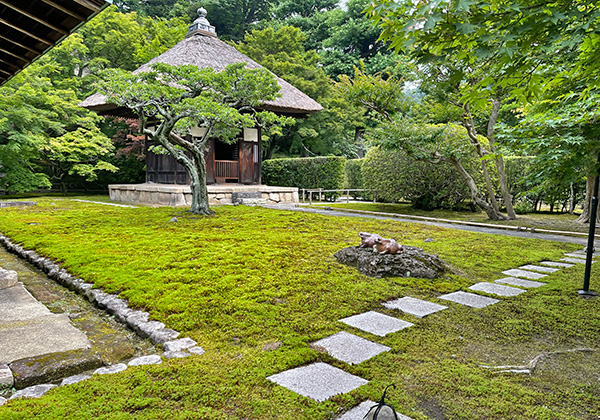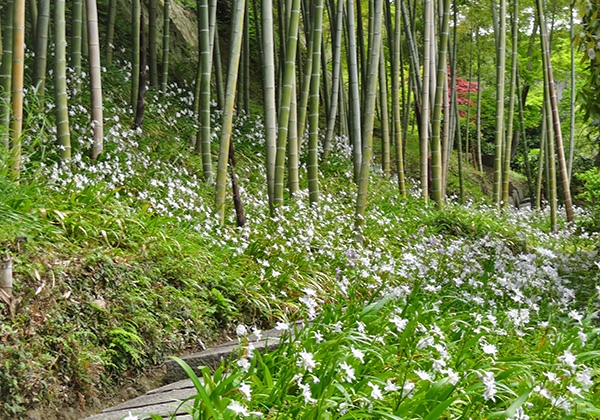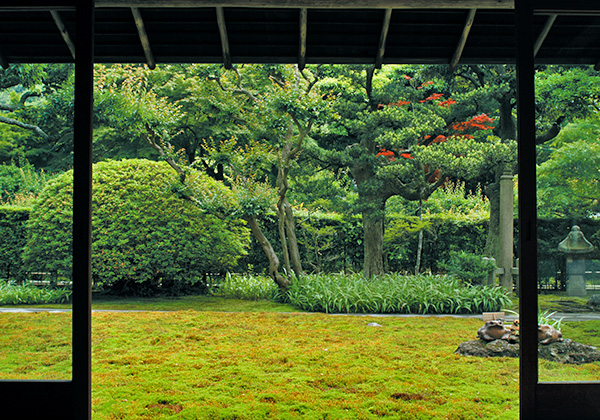Chojuji
| Official Name | Hokizan Chojuji {Pronounced hoh-key-zan choh-jew-gee} |
|---|---|
| Religious sect | Kenchoji School, Rinzai (Zen) Sect, Buddhism |
| Founded | in 1358 by Motouji Ashikaga {moh-toh-woo-gee ah-she-kah-gah} |
| Founding priest | Ingen Kosen {in-ghen ko-sen} |
| Main object of worship | Statue of Sho Kan'non |
| Address | 1503 Yamanouchi, Kamakura, Kanagawa 247-0062 (show route from current location ) |
| Location | 800 southeast of Kita-Kamakura Station |
| Time needed to get there | 14 minutes |
| Admission | JPY300 |
| Open | Not open to the public |
| Phone number | 0467-22-2147 |
Historical Overview
The Temple was founded by Motouji Ashikaga (1340-1367), the first governor in Kamakura called Kubo {koo-boh} (governor-general) to pray for the repose of his father Takauji {tah-kah-woo-gee} (1305-1358), who founded the Ashikaga Shogunate in Kyoto and assumed the first Shogun of the Muromachi Period. At its zenith, the Temple had a complete set of seven structures as a full-fledged Zen temple.
Priest Ingen Kosen (1295-1374), the founding priest, came to Kamakura from Kagoshima Prefecture, southern part of Kyushu island, when he was only eight years old, and entered Engakuji to became a priest. He took the tonsure at age 13 and went to China at 24 to learn Buddhism staying there for eight years. In 1326, he came back to Kamakura together with a Chinese Zen priest named Seicho Seisetsu {say-cho say-seh-tsu} (1274-1339), who was then invited to Kenchoji to assume the post of the 22nd chief priest. After serving for Kenchoji, Jochiji etc. he was also invited to become the 29th chief priest of Engakuji in 1359 and later the 38th chief priest of Kenchoji. A great Zen priest, he was. Priest Kosen was his favorite disciple, and assumed the post of the founding priest of the Temple at the request of Motouji.
Because Takauji Ashikaga took control of Japan after rebelling against Emperor Godaigo {go-dye-go} (1288-1339), the Temple had long to face hostility from the imperial court and the loyalist government, particularly after the imperial court restored sovereignty in 1868. In the Meiji Period (1868-1912), the Temple was ostracized as the traitor's temple, and anti-Buddhism movement further worsened the situation. At some point in the Meiji Period, there was no priest who volunteered to take care of the Temple, and it was left to near dilapidation. Probably for that reason, the Temple is still keeping a policy not to open it to the public.
Meanwhile, the name Choju means a long-life or longevity in Japanese.
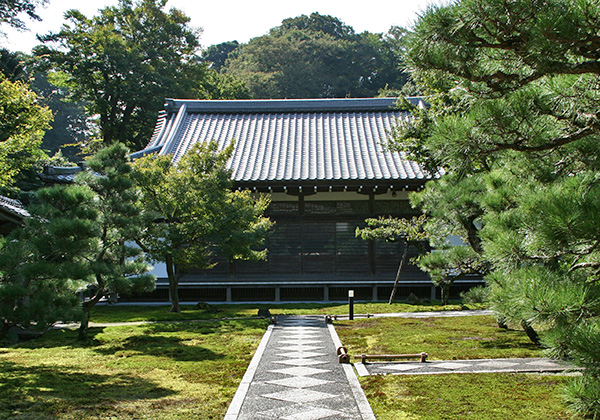
Kan'non-do Hall
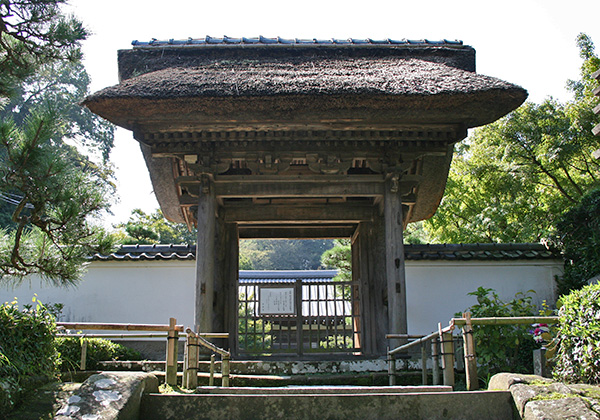
A statue of Sho Kan'non or Arya-avalokitesvara in Sanskrit is enshrined in the rather small structure with a thatched roof. The Temple also houses: A statue of Priest Kosen, 66 centimeters tall, made during the Muromachi Period (1336-1573), and a statue of Takauji Ashikaga. 54.6 centimeter tall, made during the Muromachi Period.
Gorinto for Takauji
Behind the main hall is a Gorinto for Takauji, in which his hair is said to be kept as a keepsake. Since hair do not decompose, Japanese like to keep the hair of the departed in their memory. During World War II, many Japanese soldiers going to the front left their hair to the family as their mementos in preparation for death.

